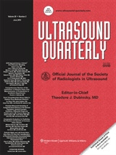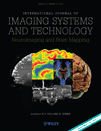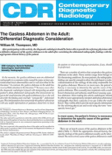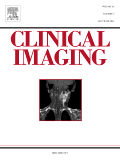
Imaging
Scope & Guideline
Pioneering Research in Radiology and Beyond
Introduction
Aims and Scopes
- Multimodal Imaging Techniques:
Research articles often explore the use of various imaging modalities such as MRI, CT, PET, and ultrasound, highlighting their combined diagnostic capabilities and advancements in imaging technology. - Radiomics and Machine Learning:
A significant focus on the application of radiomics combined with machine learning algorithms is evident, with studies aimed at predicting clinical outcomes, tumor characteristics, and treatment responses. - Clinical Applications and Diagnostic Accuracy:
The journal prioritizes studies that assess the clinical utility of imaging techniques in diagnosing and managing various diseases, including cancer, cardiovascular conditions, and neurological disorders. - Innovative Imaging Techniques:
There is an emphasis on developing and validating novel imaging methods, such as advanced MRI sequences, deep learning-based imaging reconstruction, and image fusion techniques. - AI and Deep Learning in Imaging:
The integration of artificial intelligence in imaging processes is a recurring theme, with a focus on improving accuracy, efficiency, and workflow in clinical settings.
Trending and Emerging
- Artificial Intelligence and Deep Learning:
There is a significant increase in publications utilizing AI and deep learning techniques for image analysis, segmentation, and diagnostic purposes, indicating a strong trend towards automation and enhanced accuracy. - Radiomics and Predictive Modeling:
The integration of radiomics in predictive modeling for various cancers and diseases is gaining traction, with researchers focusing on extracting quantitative features from imaging data to inform clinical decisions. - Image Fusion Techniques:
Emerging studies are focusing on the fusion of images from different modalities to improve diagnostic accuracy and provide comprehensive assessments of patient conditions. - Patient-Centric Imaging Research:
There is a growing emphasis on research that directly addresses patient outcomes, quality of life, and the impact of imaging on treatment decisions, reflecting a shift towards patient-centered care. - Advanced Imaging Biomarkers:
An increase in research exploring imaging biomarkers for disease characterization and treatment response assessment is evident, highlighting the role of imaging in personalized medicine.
Declining or Waning
- Traditional Imaging Techniques:
Research centered around conventional imaging techniques, such as standard X-rays and basic CT scans, appears to be decreasing as newer, more sophisticated modalities gain prominence. - Basic Image Processing Techniques:
There is a noticeable decline in studies focusing solely on basic image processing methods without the integration of advanced algorithms or artificial intelligence. - Single Modality Studies:
The journal is seeing fewer articles that investigate a single imaging modality in isolation, as the trend shifts towards multimodal approaches that combine different imaging techniques for enhanced diagnostic accuracy. - General Reviews on Imaging Techniques:
The frequency of general review articles discussing imaging techniques without specific applications or advancements has diminished, suggesting a preference for research with practical clinical implications. - Non-clinical Imaging Research:
There is a noticeable decline in studies focusing on purely theoretical or non-clinical applications of imaging technology, as the emphasis shifts towards research with direct clinical relevance.
Similar Journals

Ultrasound Quarterly
Empowering Radiology Innovation.Ultrasound Quarterly is a leading journal published by Lippincott Williams & Wilkins, dedicated to advancing knowledge and practice in the fields of radiology, nuclear medicine, and imaging. Established in 1988, the journal has served as a vital platform for researchers, clinicians, and students seeking to stay abreast of the latest advancements and techniques in ultrasound technology. With an impact factor that reflects its significance in the field—ranking in the Q3 category within its specialty based on the 2023 metrics—this journal reaches a global audience, facilitating knowledge dissemination and fostering innovation. Ultrasound Quarterly publishes original research, reviews, and clinical studies, making it an essential resource for professionals committed to enhancing patient care through effective imaging practices. To explore its comprehensive articles, visit the journal's website for easy access to the latest research findings.

INTERNATIONAL JOURNAL OF IMAGING SYSTEMS AND TECHNOLOGY
Innovating the Landscape of Imaging SystemsINTERNATIONAL JOURNAL OF IMAGING SYSTEMS AND TECHNOLOGY, published by Wiley, is a leading journal dedicated to advancing the field of imaging systems and technologies. With an ISSN of 0899-9457 and E-ISSN 1098-1098, this esteemed journal offers a platform for high-quality research spanning essential interdisciplinary areas, including Biomedical Engineering, Computer Science, and Health Informatics. Recognized for its impactful contributions, it holds a commendable position in the Q2 quartile across multiple categories as of 2023. The journal boasts an excellent Scopus ranking, with notable acknowledgments like rank #49 out of 333 in Radiology, Nuclear Medicine, and Imaging, showcasing its relevance and importance in the academic community. Publishes annually from 1989 to 2024, it aims to bridge gaps in knowledge and foster innovative developments through rigorous peer-reviewed articles. Though it operates under a traditional access model, the journal maintains an accessible repository of cutting-edge research, making it indispensable for researchers, professionals, and students alike seeking to stay at the forefront of imaging technology advancements.

Japanese Journal of Radiology
Connecting Researchers and Practitioners in RadiologyThe Japanese Journal of Radiology, published by SPRINGER, serves as a premier platform for disseminating cutting-edge research and clinical advancements in the fields of radiology, nuclear medicine, and imaging. With an ISSN of 1867-1071 and E-ISSN 1867-108X, this journal has established itself as a vital resource for practitioners, researchers, and students alike. Renowned for its high-quality peer-reviewed articles, it currently enjoys a respectable impact factor within the Q2 category of Scopus rankings, placing it in the 69th percentile among 333 journals in its field. The journal has seen consistent convergence of research from 2009 to 2024, further underscoring its commitment to advancing the understanding of radiological practices. Importantly, the journal offers Open Access options to facilitate widespread dissemination of knowledge, ensuring that vital research reaches its audience without barriers. Addressed in Japan, the Japanese Journal of Radiology plays a critical role in enhancing the global discourse on medical imaging, making it an essential resource for anyone engaged in this dynamic field.

Radiology-Imaging Cancer
Bridging the Gap Between Radiology and Cancer Research.Radiology-Imaging Cancer is a prestigious journal published by the Radiological Society of North America (RSNA), focusing on the critical intersection of radiology, oncology, and advanced imaging techniques. This journal stands out in its field with a commendable ranking in the Q2 category for Medicine (miscellaneous) and Oncology, and an impressive Q1 ranking in Radiology, Nuclear Medicine and Imaging, according to the 2023 quartiles. With an ISSN of 2638-616X, it serves as an essential platform for the dissemination of research that contributes to the understanding and improvement of cancer diagnosis and treatment. Its comprehensive scope encompasses a range of topics, from innovative imaging modalities to clinical applications in oncology, making it a valuable resource for researchers, clinicians, and students interested in the evolving field of cancer imaging. Despite being published in the United States, the journal aims for a global reach, catering to a wide audience dedicated to advancing medical science.

ANNALS OF NUCLEAR MEDICINE
Elevating Standards in Nuclear Medicine ScholarshipANNALS OF NUCLEAR MEDICINE is a prominent academic journal dedicated to the field of nuclear medicine, published by Springer. With a rich publication history dating back to 1987 and continuing through 2024, this journal serves as a vital resource for researchers and practitioners interested in the latest developments in nuclear imaging, radiopharmaceuticals, and therapeutic applications. Ranked in the second quartile (Q2) for both Medicine (miscellaneous) and Radiology, Nuclear Medicine, and Imaging categories in 2023, it maintains a strong position in the academic community, with an impressive Scopus rank of #104 out of 333 in its field, placing it in the 68th percentile. The journal is not open access but offers a range of access options through institutional or individual subscriptions, ensuring that critical research findings reach a wide audience. By fostering high-quality, peer-reviewed articles, ANNALS OF NUCLEAR MEDICINE plays a crucial role in advancing the understanding and practical application of nuclear medicine techniques, making it an essential journal for professionals and students aiming to stay at the forefront of this evolving discipline.

Egyptian Journal of Radiology and Nuclear Medicine
Empowering Knowledge in Radiology and Nuclear MedicineThe Egyptian Journal of Radiology and Nuclear Medicine, published by Springer, is a premier open access journal that has provided valuable insights and advancements in the fields of radiology and nuclear medicine since its initiation in 2010. With an E-ISSN of 2090-4762, this journal is dedicated to bridging the gap between research and clinical practice, allowing for the dissemination of high-quality research to a global audience. Situated in Germany, it enjoys a robust reputation in the academic community, evidenced by its categorization in the Q3 quartile for 2023, as well as its Scopus ranking, where it holds a position of #225 out of 333 in the domain of Radiology, Nuclear Medicine and Imaging, placing it in the 32nd percentile. The journal's open access model ensures that researchers, professionals, and students can freely access innovative studies, reviews, and case reports that discuss the latest methodologies, technological advancements, and clinical outcomes in radiology and nuclear medicine. As it looks toward its converged years spanning from 2010 to 2024, the Egyptian Journal of Radiology and Nuclear Medicine continues to be an essential resource for advancing knowledge and fostering ongoing collaboration in these critical fields.

EUROPEAN RADIOLOGY
Elevating Standards in Radiology ResearchEUROPEAN RADIOLOGY, published by SPRINGER, stands as a prestigious international journal in the field of radiology, nuclear medicine, and imaging, with an impressive impact factor that underscores its significance among peers. With an ISSN of 0938-7994 and an E-ISSN of 1432-1084, this journal provides a platform for cutting-edge research and advancements in medical imaging from 1991 to 2024. Recognized as a Q1 journal in both general Medicine and the specialized Radiology category by 2023, EUROPEAN RADIOLOGY ranks an impressive #17 out of 333 in its field according to Scopus, placing it in the 95th percentile. While it does not currently offer Open Access options, the journal remains essential reading for researchers, professionals, and students striving to stay at the forefront of developments in diagnostic imaging and related technologies. By contributing to a comprehensive understanding of radiological practices, EUROPEAN RADIOLOGY plays a crucial role in shaping the future of medical diagnosis and patient care.

Abdominal Radiology
Empowering Radiologists with Cutting-Edge ResearchAbdominal Radiology is an esteemed journal published by Springer, focusing on the intricate and evolving field of abdominal imaging. With its ISSN 2366-004X and E-ISSN 2366-0058, this journal serves as a vital platform for disseminating high-quality research and clinical findings that advance both the understanding and practice of radiology specifically related to abdominal diseases. With a commendable impact, categorized in 2023 as Q2 in the fields of Gastroenterology, Radiological and Ultrasound Technology, and Radiology, Nuclear Medicine and Imaging, and Q1 in Urology, it attracts an audience eager for cutting-edge insights. Furthermore, its ranking in Scopus reflects its strong influence, with a notable position of #21 in Urology and #92 in Radiology. The journal adopts an Open Access model, facilitating a wider dissemination of knowledge and promoting collaborative research efforts on a global scale. The convergence of contributions from established researchers and emerging professionals alike enriches its content from 2016 to 2024, ensuring that readers remain at the forefront of abdominal diagnostics and therapeutic advancements.

Contemporary Diagnostic Radiology
Pioneering Research in Contemporary RadiologyContemporary Diagnostic Radiology is a pivotal journal in the field of medical imaging and radiology, published by Lippincott Williams & Wilkins. With an ISSN of 0149-9009 and an E-ISSN of 1938-1395, this journal serves as an essential platform for disseminating high-quality research and advances in diagnostic radiology and related disciplines. While it is categorized in the lower quartiles (Q4) for its performance in the 2023 rankings in both Neurology, Radiology, Nuclear Medicine and Imaging, and Surgery, its focus on emerging technologies and methodologies in imaging continues to provide valuable insights for practitioners and researchers alike. The journal’s scope includes innovative diagnostic tools, imaging techniques, and case studies, fostering collaboration and knowledge sharing in the medical community. Although it does not offer open access options, its commitment to contributing to the ongoing dialogue in clinical imaging is undisputed, making it an essential resource for professionals seeking to stay abreast of current trends and research in the rapidly evolving landscape of diagnostic radiology.

Clinical Imaging
Innovating Radiology Through Cutting-Edge ResearchClinical Imaging, published by Elsevier Science Inc, is a renowned journal dedicated to the field of radiology, nuclear medicine, and imaging. With an ISSN of 0899-7071 and an E-ISSN of 1873-4499, this esteemed publication has established its significance in advancing imaging science since its inception in 1989 and continues to make impactful contributions to the discipline through 2024. The journal holds a prestigious Q2 ranking in the category of Radiology, Nuclear Medicine, and Imaging, reflecting its critical role in bridging research and clinical practice. Currently ranked #113 out of 333 by Scopus, with a notable 66th percentile, it offers a platform for disseminating high-quality research, reviews, and case studies that inspire innovation and enhance imaging techniques. Although it primarily functions as a subscription-based journal, it remains dedicated to accessibility and the dissemination of pivotal findings that inform both academia and clinical settings. Clinical Imaging is essential for researchers, professionals, and students alike, offering insights that shape the future of diagnostic imaging.